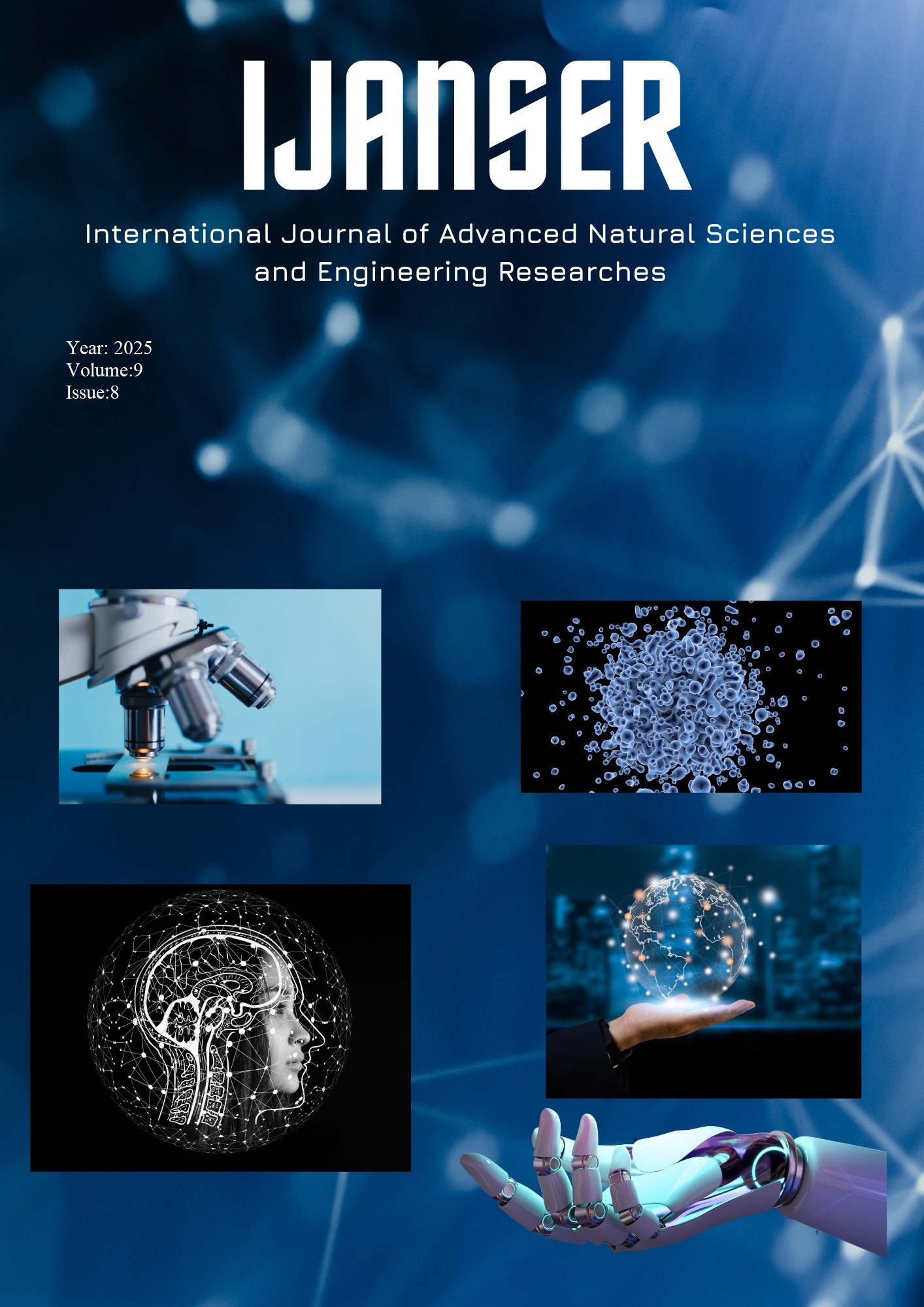Statistical Analysis of the Effect of Waste Polymer and Carbon Additives on Porosity in Cementitious Composites
Keywords:
Cement, Concrete Composite, Carbon-Based Materials, Waste Polymer, TaguchiAbstract
Concrete is a building material that has been used extensively throughout human history and has
played a fundamental role in the formation of civilizations. The strength, durability, and longevity of
concrete are affected by many factors, and among these factors, porosity plays a critical role in determining
concrete quality. In recent years, advances in nanotechnology have highlighted the use of nanomaterials,
which impart different properties to building materials, particularly in the construction industry. However,
improper disposal of waste polymers poses a serious problem for the ecosystem. Therefore, the use of waste
polymers as aggregates in cement composites is considered an environmentally friendly approach.
However, considering that the use of polymer alone can lead to a loss of mechanical properties, this study
aimed to achieve synergistic effects by using graphene oxide, reduced graphene oxide, and graphene
nanopellet additives. A total of nine experiments were conducted using the Taguchi method using a
statistical experimental design and an L9(3⁴) orthogonal array. The experimental plan specified the type and
amount of nanomaterial, and the type and amount of polymer as parameters. It was determined that all
parameters had an impact on the porosity of the cement composite, with the polymer type being the most
influential parameter.
Downloads
References
P.K. Mehta, P.J. Monteiro, Concrete: microstructure, properties, and materials, (2006).
S. Avudaiappan, S. Prakatanoju, M. Amran, R. Aepuru, E.I. Saavedra Flores, R. Das, R. Gupta, R. Fediuk, N.J.C. Vatin, Experimental investigation and image processing to predict the properties of concrete with the addition of nano silica and rice husk ash, 11 (2021) 1230.
B. Şimşek, T. Uygunoğlu, M. Uğur, Ö.B. Ceran, Ö.F.J.C. Dilmaç, B. Materials, Experimental investigations of aluminum hydroxide nanoparticles on properties of cementitious composites using macro and micro scale tests, 401 (2023) 132955.
S. Lv, Y. Ma, C. Qiu, T. Sun, J. Liu, Q.J.C. Zhou, b. materials, Effect of graphene oxide nanosheets of microstructure and mechanical properties of cement composites, 49 (2013) 121-127.
Z. Pan, L. He, L. Qiu, A.H. Korayem, G. Li, J.W. Zhu, F. Collins, D. Li, W.H. Duan, M.C.J.C. Wang, C. Composites, Mechanical properties and microstructure of a graphene oxide–cement composite, 58 (2015) 140-147.
A. Hassani, B. Fakhim, A. Rashidi, P.J.I.J.o.T.E. Ghoddousi, The influence of graphene oxide on mechanical properties and durability increase of concrete pavement, 2 (2014) 119-130.
F. Fraternali, V. Ciancia, R. Chechile, G. Rizzano, L. Feo, L.J.C.s. Incarnato, Experimental study of the thermo-mechanical properties of recycled PET fiber-reinforced concrete, 93 (2011) 2368-2374.
T. Ochi, S. Okubo, K.J.C. Fukui, C. Composites, Development of recycled PET fiber and its application as concrete-reinforcing fiber, 29 (2007) 448-455.
H. Qin, W. Wei, Y.H.J.J.o.P. Hu, C.o. Solids, Synergistic effect of graphene-oxide-doping and microwave-curing on mechanical strength of cement, 103 (2017) 67-72.
W.S. Hummers Jr, R.E.J.J.o.t.a.c.s. Offeman, Preparation of graphitic oxide, 80 (1958) 1339-1339.
H. Korucu, B. Şimşek, A.J.A.J.f.S. Yartaşı, Engineering, A TOPSIS-based Taguchi design to investigate optimum mixture proportions of graphene oxide powder synthesized by hummers method, 43 (2018) 6033-6055.
H.J.J.o.M.S. Korucu, Evaluation of the performance on reduced graphene oxide synthesized using ascorbic acid and sodium borohydride: Experimental designs‐based multi‐response optimization application, 1268 (2022) 133715.





